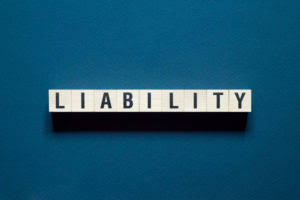
For instance, if the treadmills sustain any damage while being transported to the manufacturer’s facility, it is the manufacturer who must bear the responsibility for the damage. Unlike FOB destination, the manufacturer cannot seek reimbursement from the supplier in this scenario. The costs will typically remain the same regardless of FOB shipping configurations. Even so, costs can end up being higher in an FOB shipping point because they are not fully pre-determined.
FOB destination means the seller pays all costs
That said, FOB https://www.bookstime.com/ can also default to just being an FOB origin if the specifics are not clarified. Keep reading to learn more about this crucial shipping term so that you don’t get stuck footing the bill on your own. FOB is not a one-size-fits-all term; it comes with a variety of designations that provide more specific guidance on shipping responsibilities.
- With FOB shipping point, ownership of goods is transferred to the buyer once they leave the supplier’s shipping point.
- Clearly understanding these responsibilities enables a smooth transition between the parties at the handover point and avoids misunderstandings.
- Unlike FOB shipping, the supplier is not required to ensure the safe movement from port to ship.
- Plus, with greater control over the shipping process, buyers can ensure that the goods arrive on time and in good condition, all while saving some doubloons along the way.
- Assume a fitness equipment manufacturer receives an order for 20 treadmills from a newly opened gym across the country.
- The seller retains liability until the buyer accepts the goods, ownership, and liability at the receiving dock, office or agreed-upon place of transfer, after inspecting for damage.
FOB Shipping Point vs. FOB Destination
The buyer pays for the freight cost in the FOB shipping point agreement from the designated shipping point onwards. The FOB pricing point is the specific location where ownership and responsibility for goods transfer from the seller to the buyer during shipping. So, let’s delve into these sea shipping Incoterms to gain an understanding of their roles in facilitating global trade. These terms, last updated by the International Chamber of Commerce (ICC) in 2020, encompass 11 internationally acknowledged Incoterms. These standards outline the respective responsibilities of buyers and sellers during export transactions.
Evaluate your risk tolerance
The distinction is important in specifying who is liable for goods lost or damaged during shipping. The primary difference between the two contracts is in the timing of the transfer of the title for the goods. This means that your shipment is in the proverbial hands of the supplier through the process of transporting them to a port and loading them aboard a ship. It requires the supplier to pay for the delivery of your goods up until the named port of shipment, but not for getting the goods aboard the ship. FOB shipping point offers several benefits for businesses involved in international trade.

- These variations specify additional conditions and responsibilities related to shipping and payment.
- That destination is the receiving port, not the final stop or seller’s warehouse in the journey across the country.
- On the other hand, the seller is responsible for the shipping costs from the point of origin to the FOB warehouse destination.
- There are situations where you may be responsible for covering costs before your goods are on board.
- Proper documentation and communication are also critical when using a FOB shipping point.
FOB terms influence when buyers and sellers pass FOB shipping point journal entries and record transactions in their ledgers, impacting financial reporting and inventory management. For international shipping to go smoothly and effectively, it is essential that you understand the primary responsibilities outlined in FOB shipping point agreements. Clearly defining the FOB shipping point in the sales contract removes ambiguity about when ownership and risk transfer. This enables a smooth handover between seller and buyer at the point of shipment origin.
- Hopefully, the buyer in this example took out cargo insurance and can file a claim.
- From that point, the buyer is responsible for making further transport arrangements.
- This allows buyers to save budget on shipping costs and has greater control over the shipping process.
- For FOB destination contracts, the shipper, who is also usually the seller, will remain liable until the goods physically reach the buyer.
- Our customers demand quality performance from our fabrications long after installation.
- The Smart Rules engine may help you to calculate VAT for your sales based on the shipping address country or region.
Can you provide an example of FOB shipping point?
This is where FOB shipping terms come in as an essential compass for businesses engaging in international trade. If the goods are damaged in transit, the loss is the responsibility of the buyer. At the same time, even though the treadmills have not yet been delivered, the buyer has now officially taken responsibility for the goods. When at the shipping point, the buyer now has an open accounts payable balance though it also should now carry the treadmill on their financial records. The fact the the treadmills may take two weeks to arrive is irrelevant for this shipping agreement; the buyer will already possess ownership while the goods are in transit. Incoterms define the international shipping rules that delegate responsibility of buyers and sellers.
DDP means “delivered duty paid.” Under this Incoterm rule, the seller agrees to deliver goods to the buyer, paying for all shipping, export, and import duties and taxes. DAP, or “delivered-at-place,” says a seller agrees to be responsible for transporting goods to a location stated in the sales contract. CIP stands for “carriage and insurance paid to” says that the seller pays for delivery and insurance of goods to a carrier or nominated location. When goods are labeled as FOB shipping point, the seller’s role in the transaction is complete when the purchased items are given to a shipping carrier and the shipment begins. The opposite is FOB Destination, where the seller remains responsible for goods until they reach the buyer’s destination.